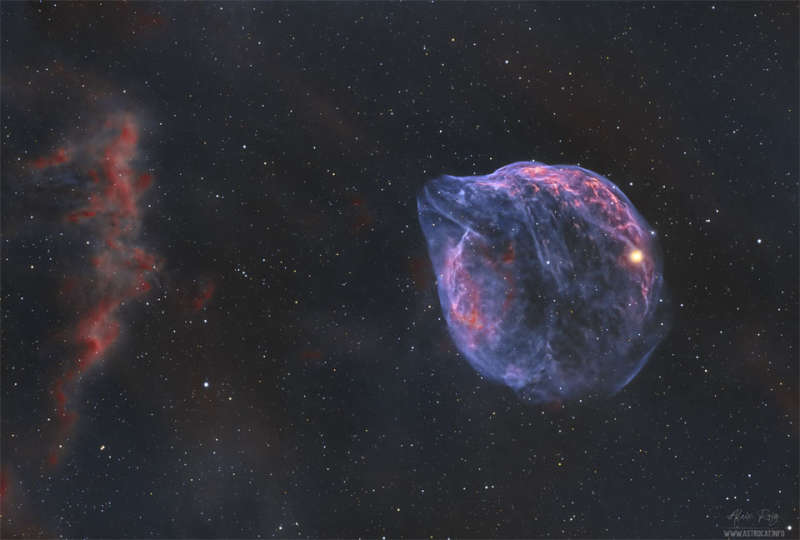Credit & Copyright: Aleix Roig
(AstroCatInfo)
Explanation:
Which star created this bubble?
It wasn't the bright star on the bubble's right.
And it also wasn't a giant space
dolphin.
It was the star in the blue nebula's center, a famously energetic
Wolf-Rayet star.
Wolf-Rayet stars in general
have over 20 times the mass of
our Sun and expel fast
particle winds that can create
iconic
looking
nebulas.
In this case, the resulting star bubble spans over 60 light years, is about 70,000
years old, and happens to look like the head of a dolphin.
Named
Sh2-308 and dubbed the
Dolphin-Head Nebula,
the gas ball lies about 5,000
light years
away and covers as much sky as the
full moon -- although it is much dimmer.
The nearby red-tinged clouds on the left of the
featured
image
may owe their glow and shape to energetic light emitted from the same
Wolf-Rayet star.
1999 2000 2001 2002 2003 2004 2005 2006 2007 2008 2009 2010 2011 2012 2013 2014 2015 2016 2017 2018 2019 2020 2021 2022 2023 2024 2025 |
Yanvar' Fevral' Mart Aprel' Mai Iyun' Iyul' Avgust Sentyabr' Oktyabr' Noyabr' Dekabr' |
NASA Web Site Statements, Warnings, and Disclaimers
NASA Official: Jay Norris. Specific rights apply.
A service of: LHEA at NASA / GSFC
& Michigan Tech. U.
|
Publikacii s klyuchevymi slovami:
tumannost' - zvezdy Vol'fa-Raie - zvezdnyi veter - Wolf-Rayet star
Publikacii so slovami: tumannost' - zvezdy Vol'fa-Raie - zvezdnyi veter - Wolf-Rayet star | |
Sm. takzhe:
Vse publikacii na tu zhe temu >> | |
